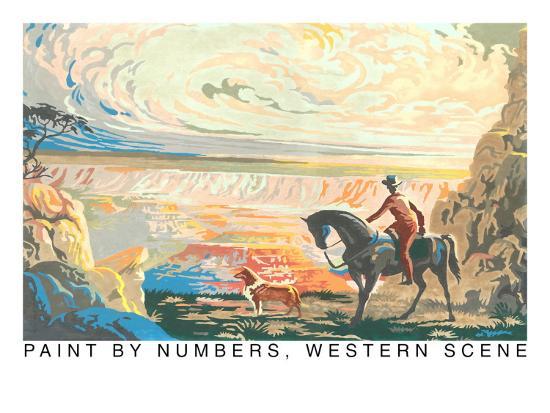His name was Dan Robbins, and he spent years Baskin' in the glow of his success.
(I wish to have that pun stricken from the record, your honor).
Robbins was working for the Palmer Paint Company as a package designer and graphic artist out in Detroit in the late 1940s. His boss came to him asking for ideas about how to sell more paint, as bosses will.
Palmer Paint specialized in washable paints for children, but Dan figured that there was an adult market in helping people find painting fun. And he knew that Leonardo da Vinci had used a system of outlines on canvas, given to apprentices with instructions to fill in the outlines with colors.
The idea came along at the right time, because after World War II, Americans, tired of fighting and conflict, turned to hobbies such as home decorating, woodworking, procreating, and art. Before the war, there was no time for leisure time, as everyone was too busy churning their own butter, making shirts from old flour sacks, and walking seven miles through mounds of snow to get to school (according to what we heard as kids in the 50s).
But oh man, the 50s were big for paint-by-number! And people started wearing smocks and berets and really getting into it, and dens and living rooms across the nation were festooned with the little masterpieces as soon as the paint dried.
 |
| Those tiny numbers corresponded to tiny bottles of paint. Fill in the blanks, and hang it up on the den wall. |

I'm no artist, but it seemed like the paint version of Mad Libs, that party favorite where you toss in a word as directed and everyone laughs. But no one thinks the people who play Mad Libs are "writing" anything, and it never seemed to me that paint-by-number pictures of wagon wheels propped up against a cactus, or a Vermont town with a church steeple towering over everything, or a fishing boat setting sail for a day of fun out on the bay were really art.
What's really sad is that Robbins (pictured above in paint-by-number glory) didn't even get rich from his invention, because he didn't own the paint company, or Craft Master, the parent corporation to Palmer Paint. That's where the money went. And Craft Master was sold to General Mills, purveyors of Cheerios, Cinnamon Toast Crunch, and Frosted Lucky Charms.
Seems to me he deserved better.


No comments:
Post a Comment